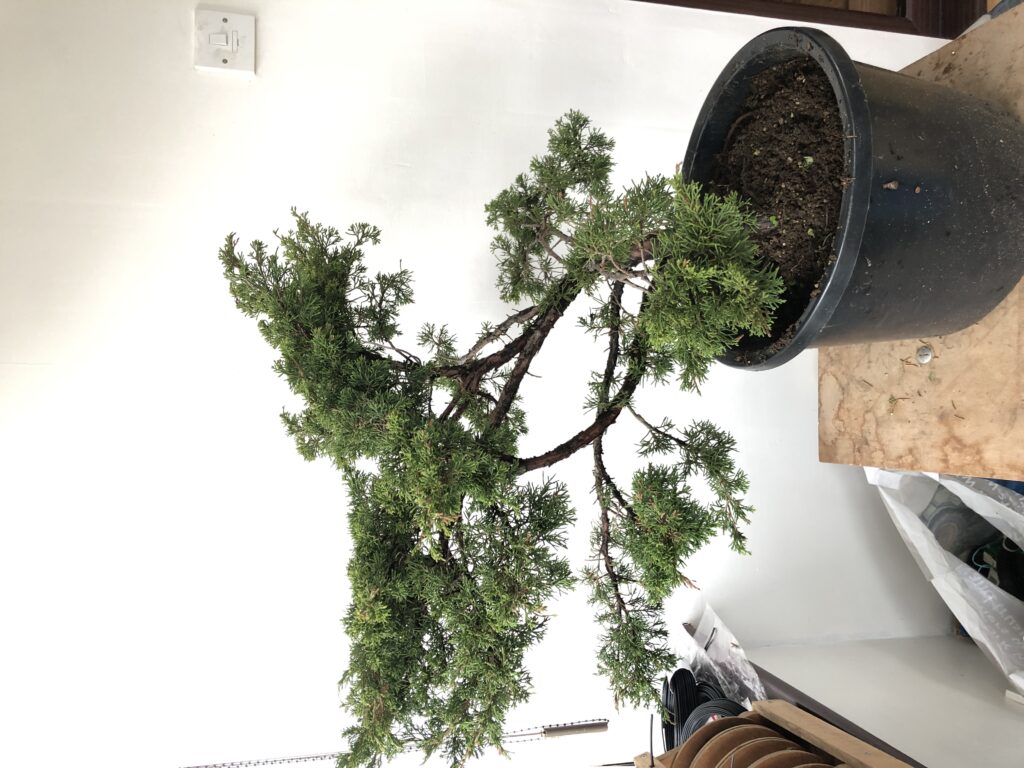
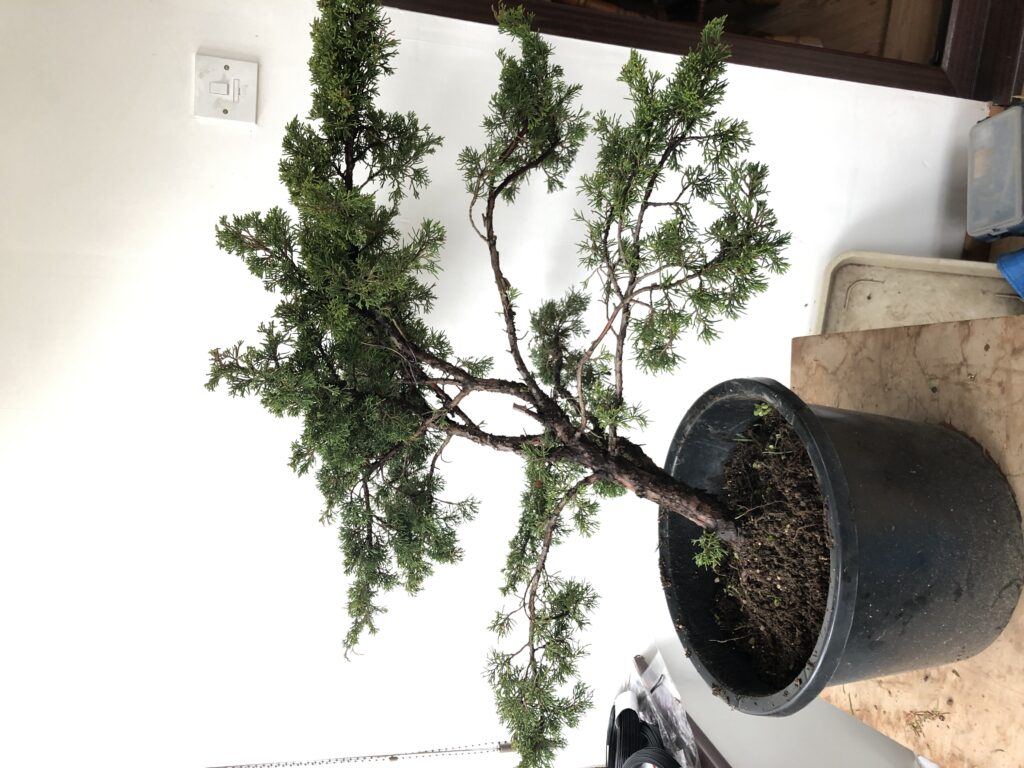
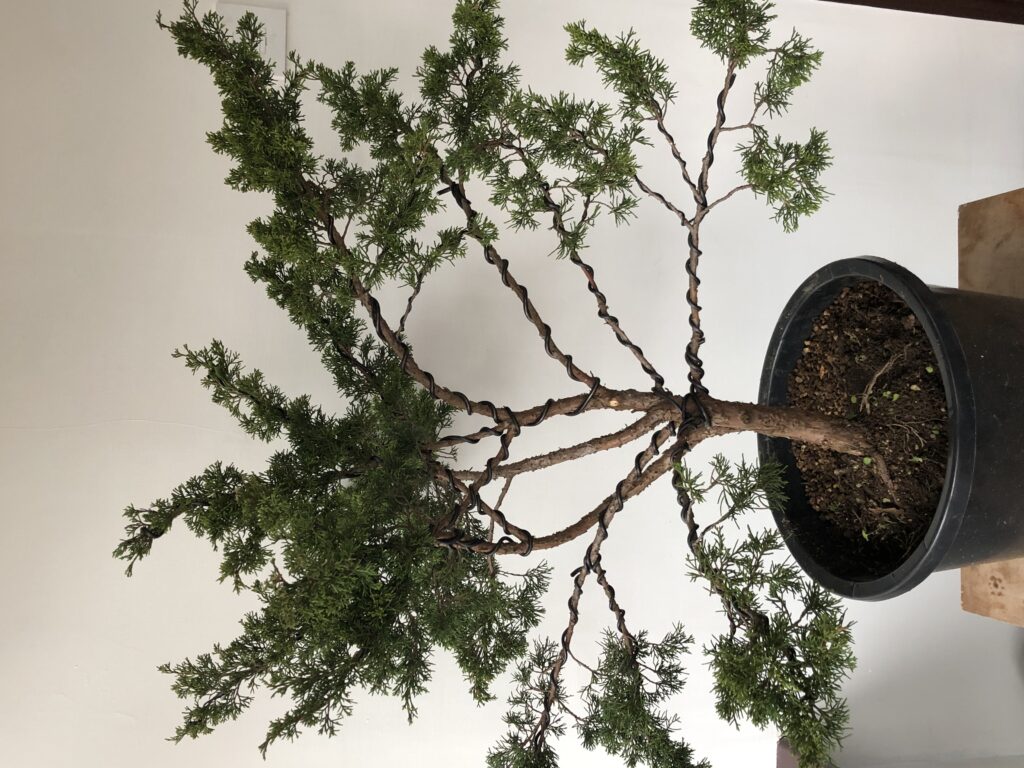

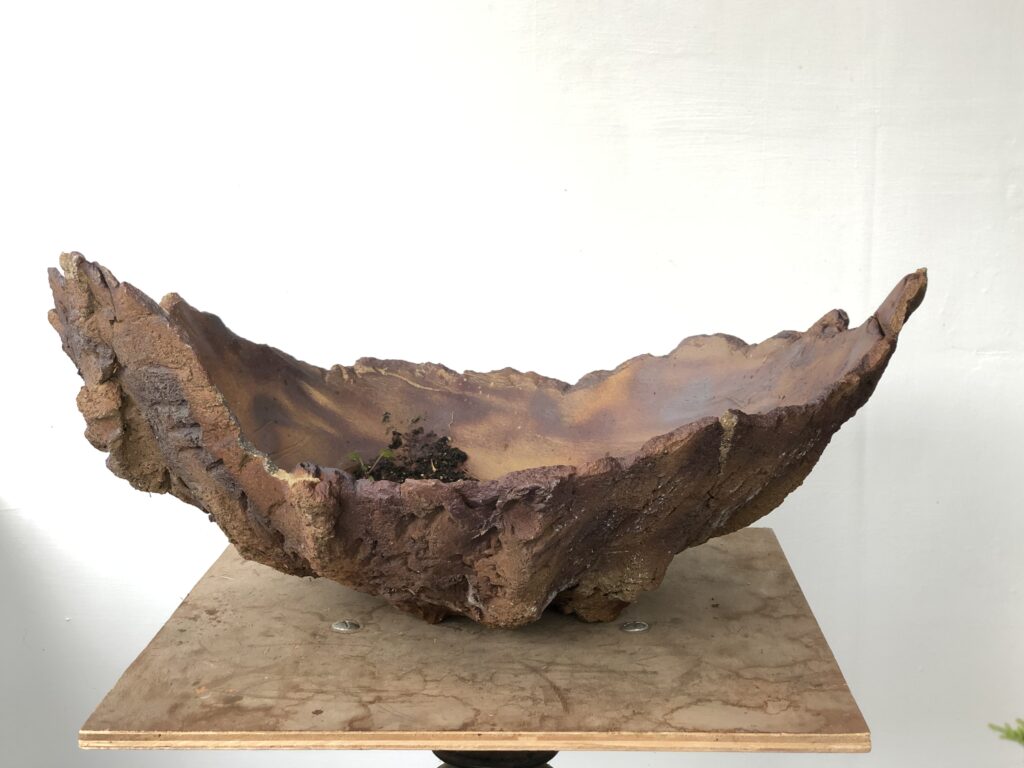
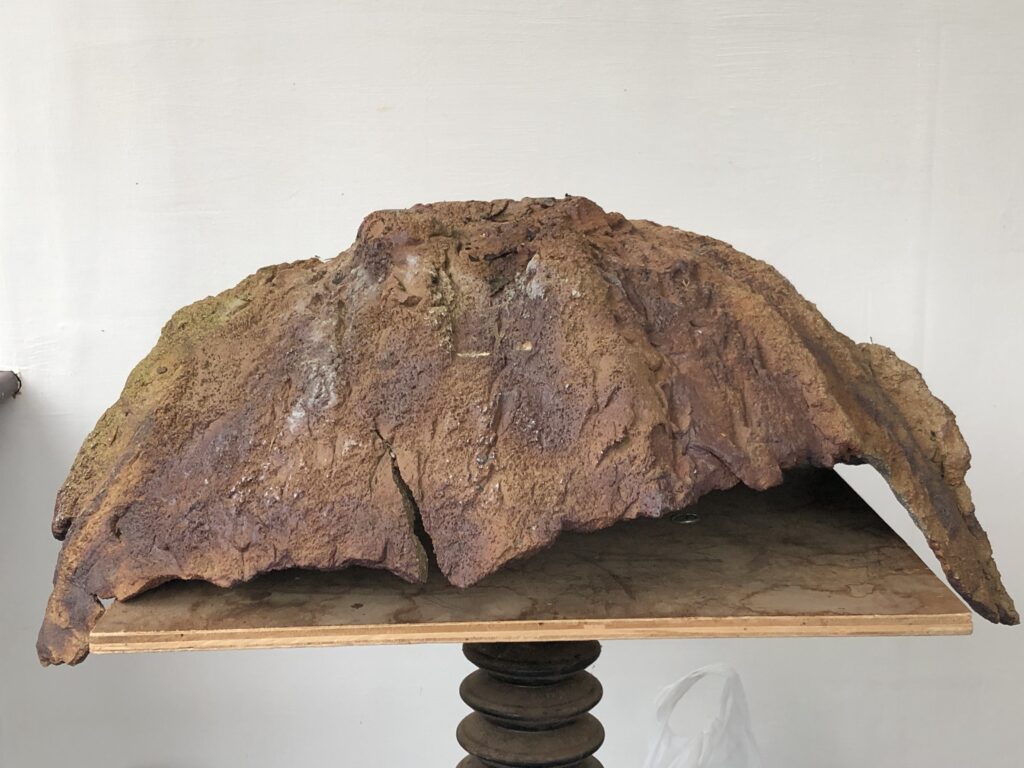
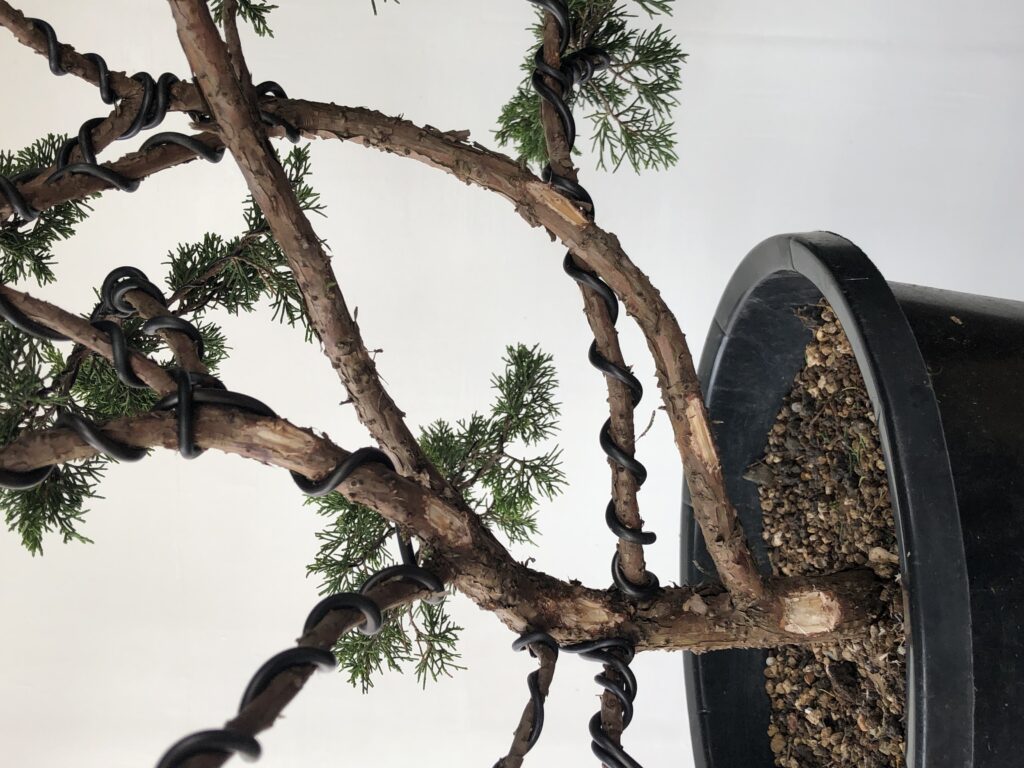
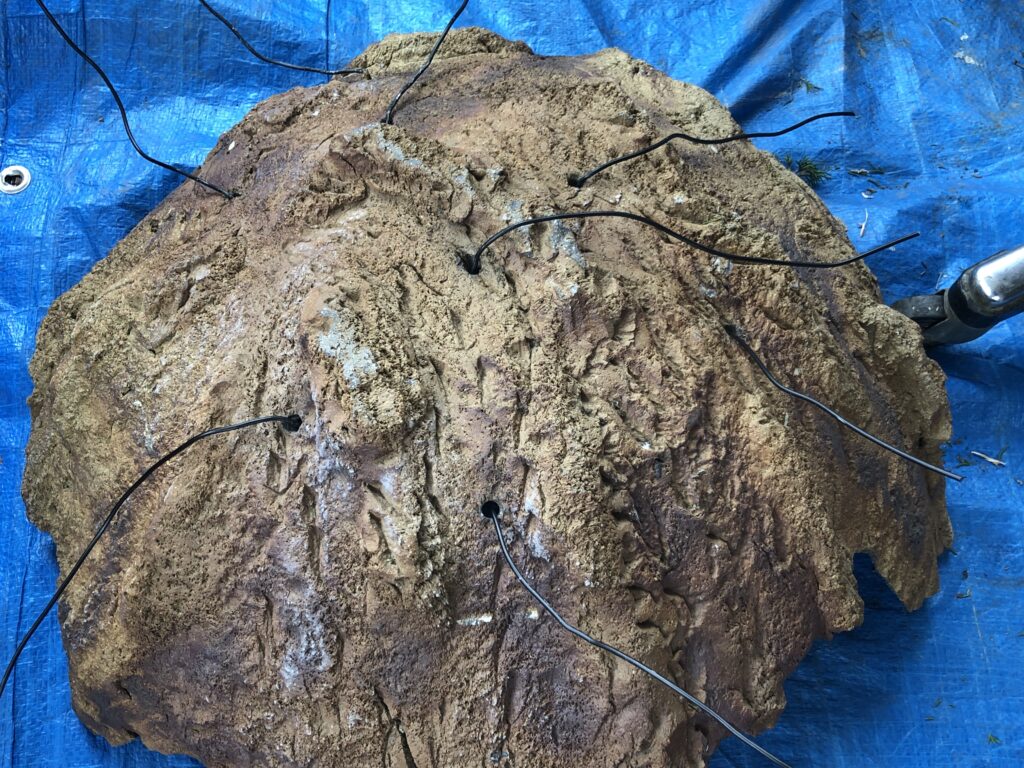
Unfortunately I didn’t get the opportunity to take more photographs as I brought the two together. With limited time available to complete the demo I had to keep the momentum going.
Positioning the tree on the slab pot was indeed a challenge, trying to get it to sit in the right position where I could accommodate the existing rootball and at the same time secure the branches where they could be arranged to create a natural looking forest.
Once the tree was secure I could set about covering everything with keto (a mud like substance from Japan that is perfect for slab and rock plantings). I introduced some neat akadama in the top section of the pot and secured this with keto too.
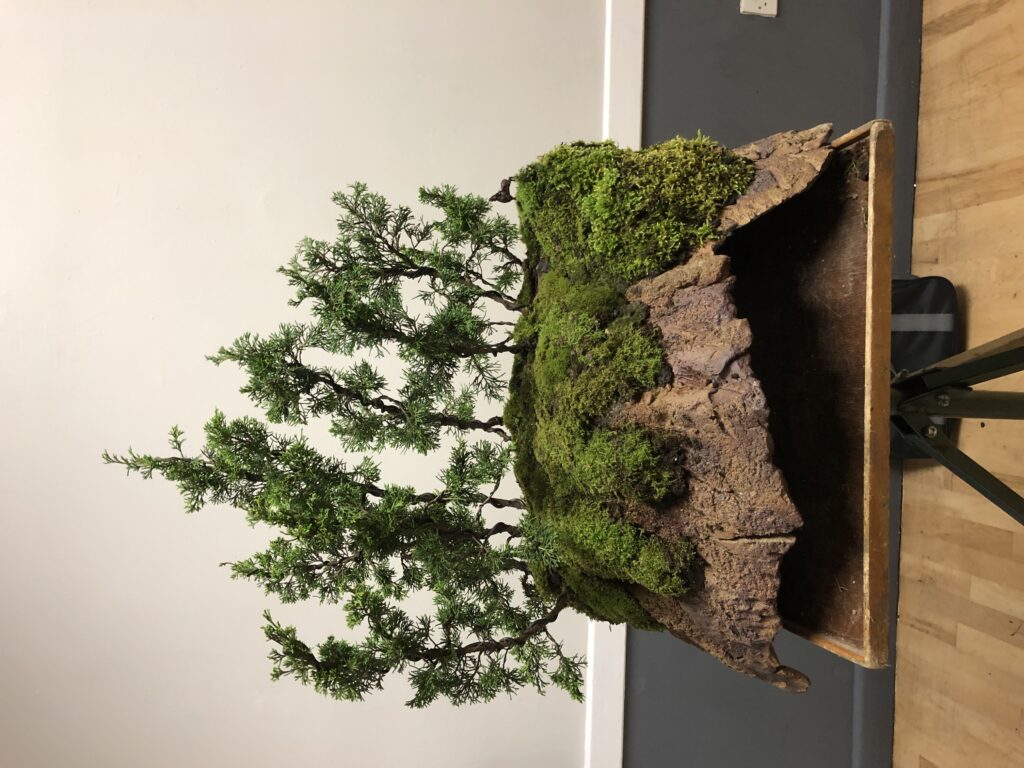
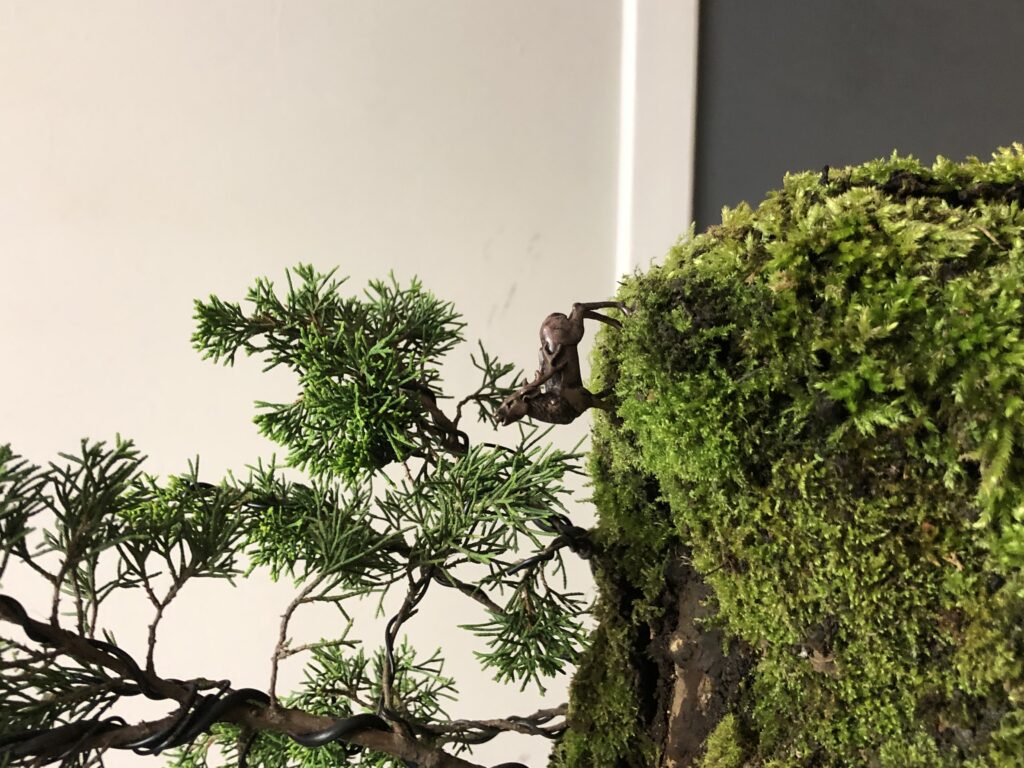
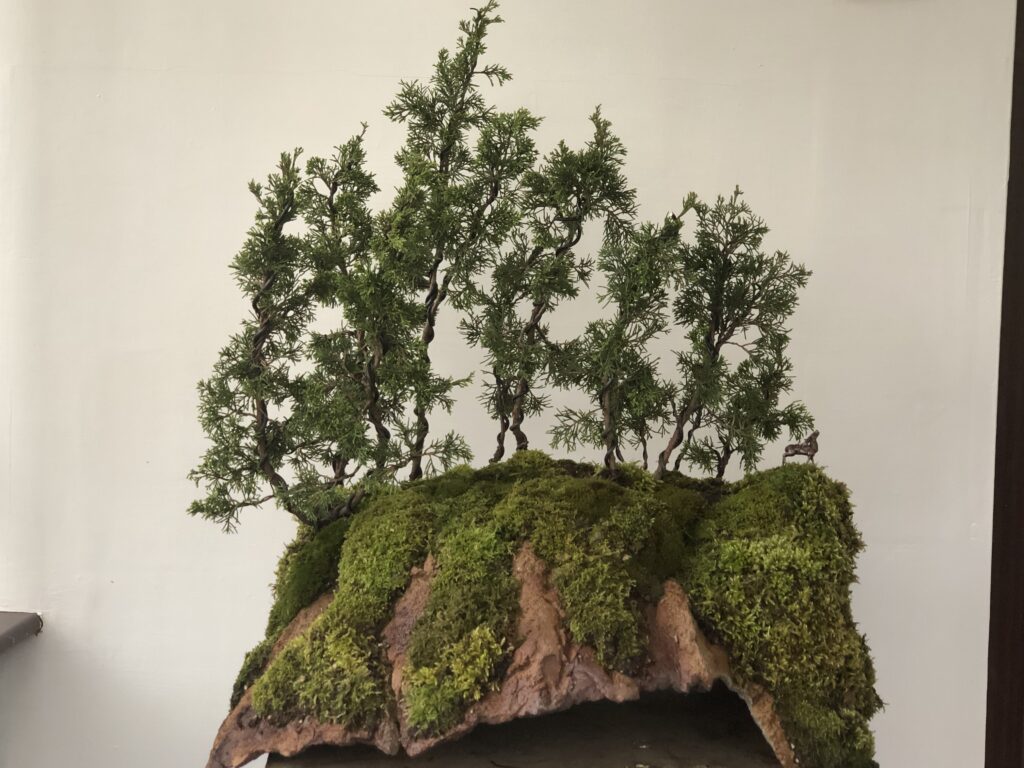
THOUGHTS WORTHY OF NOTE :- Despite being ruled by the position of branches on the original material and restricted by how they could be transferred onto the slab pot this composition still follows the basic principles of forest design. There is obvious movement, in this case from left to right with the tallest tree, the focal point being approximately a third of the way into the forest. Tree heights are different but combine well to provide a nice broad canopied triangular silhouette. Larger trees are to the front, smaller ones to the rear to give a sense of depth.
Notice how you can alter and change the movement in the composition simply by reversing the position of the small stag. In the bottom picture the stag is facing outwards, his head is parallel to the line of the trunks, he is in harmony with the group and your eye is drawn to the vast open space beyond this mountain scene.
In the first picture taken at the demo he is facing inwards almost defiantly towards the forest. This virtually stops your eye line dead, preventing you drifting into space and instead drawing you back into the composition and the moss edging the landscape.
I am really pleased with how this creation turned out, it’s nice when an idea comes to fruition. I hope you like it too.
